№197798[Quote]
File: Margiris.png 📥︎ (1.89 MB, 815x879) 8660b25f7de39983587d658d219299cfa798660c799b88669665597a796487930ImgOps
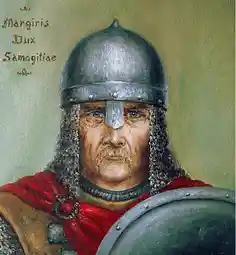
File: Margiris.png 📥︎ (1.89 MB, 815x879) 8660b25f7de39983587d658d219299cfa798660c799b88669665597a796487930ImgOps

⚔️
Duke Margiris – The Last Stand of Pilenai (1336)
The ultimate Liti "die on your feet" story. Margiris was a duke who defended the Pilenai fortress against a massive teutonic assault. When it became clear that defeat was inevitable, the defenders burned their own fort, killed each other, and set everything ablaze, rather than be taken prisoner or enslaved. Chroniclers say ~4,000 people perished, and the sheer brutality and loyalty to freedom turned Margiris into a national legend. Think Thermopylae, but Baltic and grimmer.

№197800[Quote]
File: Margiris.png 📥︎ (1.89 MB, 815x879) 8660b25f7de39983587d658d219299cfa798660c799b88669665597a796487930ImgOps
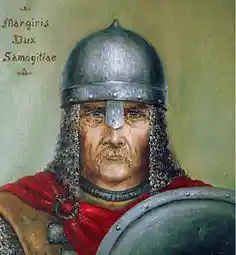
In
Lithuania,
the act of suicide—far from being viewed solely as despair—is often wrapped in a cloak of
grim majesty, an echo from the
ancient Baltic soul. ❤️
From the legendary mass self-immolation at
Pilenai in 1336 >>197798 , where thousands chose flames and blades over enslavement, a deep cultural vein was struck—one that honors death with dignity over life in chains.
 To the Lithi spirit, poverty, dishonor, and subjugation are fates worse than death, and choosing one’s own end
To the Lithi spirit, poverty, dishonor, and subjugation are fates worse than death, and choosing one’s own end 
becomes
an act of ultimate sovereignty.

This ethos runs like iron through our medieval chronicles, through folk songs and poetry, where doomed lovers leap from cliffs, warriors fall by their own sword rather than yield, and forest spirits weep not for the dead, but for the shamefully living.
 ;;Even our genetic melancholy, that heavy Baltic quietness;;
;;Even our genetic melancholy, that heavy Baltic quietness;;, whispers a message older than Christendom:
better to vanish with pride than kneel with breath. It is not about surrender. It is about refusing to let your enemies write your final line.
And in this refusal, there is something terrible, beautiful, and defiantly Lithuanian.

№197802[Quote]
File: Šventaragis.jpg 📥︎ (86.7 KB, 596x400) 70ccb239c4ccb24c9999e66db33c9a6ce3391339cdcc5e6129bc3864a736e0b60ImgOps

Šventaragis – The Mythic Founder
While more myth than history, Grand Duke Šventaragis supposedly founded the Valley of Šventaragis (now part of Vilnius), where Lithuanian rulers would be cremated in sacred oak groves. He’s seen as a noble proto-pagan king who kept the sacred flame of the old gods alive. In some tales, he’s a knightly figure in his own right—wise, noble, and tied to the land.
№197805[Quote]
File: IMG_9012.jpg 📥︎ (232.25 KB, 800x533) 80bfd35ae2ac9dd452da30a5c8419efb87bdc10937aeec4c7b1948f41d83a7220ImgOps
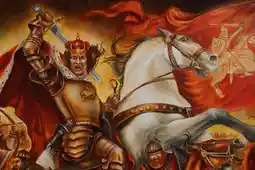
File: IMG_9010.jpg 📥︎ (310.97 KB, 800x533) e29270f31211168bb743e9622556e9781fbc5a900e92fdd2e31ee9ab39f946910ImgOps
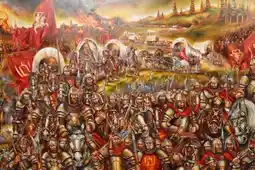
File: IMG_9016.jpg 📥︎ (356.48 KB, 800x533) d0667b0cbd10143f4b4278b4aff0fc835b325969cde925ff4acd447e861e031c0ImgOps
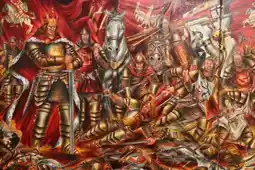
File: 3840x2160.png 📥︎ (760.78 KB, 3840x2160) b64c66dd4ce8bbc613fd0ccae0b093682696659999339844c4898b36bb7f36e60ImgOps

>>191282 >>191168 >>191162❤️
Vytautas the Great – Knight, Duke, God-tier Strategist (1350–1430)Not just a real historical figure—he’s practically a Baltic Arthur. Vytautas crushed the Teutonic Order at Grunwald, united vast territories, played political 4D chess across Europe, and almost became King. His charisma and ruthlessness are legendary. Some stories even depict him as untouchable in battle, protected by destiny, and marching with banners that glowed like fire. №197806[Quote]
File: IMG_8469.jpg 📥︎ (421.63 KB, 1024x768) 3f222e3695ef9113ade12f3aa8dc907fae00066ce2b8d2b4723a97b053baec8a0ImgOps
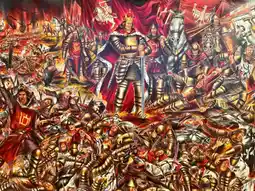
File: IMG_8466.jpg 📥︎ (393.64 KB, 1013x768) f86ed2ebc344ba454c9499d8a5b44679e595dc6425bd11f924e5f14d0327e8170ImgOps
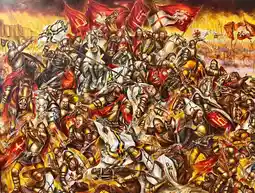
№197811[Quote]
File: fragmentas.jpg 📥︎ (163.1 KB, 640x480) 74b2ba23de8a2edba4e7125b12bf760144c13f70983784c9f10ce7347f189b590ImgOps
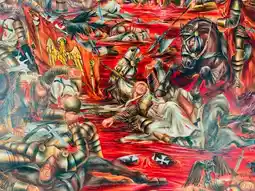
File: fragmentas.jpg 📥︎ (163.1 KB, 640x480) 74b2ba23de8a2edba4e7125b12bf760144c13f70983784c9f10ce7347f189b590ImgOps
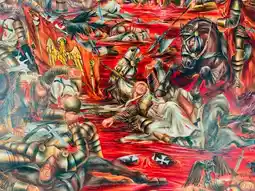
№197812[Quote]
>>197809how about… no
Iceland won
№197816[Quote]
>>197805 >>197798 >>197795 >>197794 >>197793 The Iron Wolf & Gediminas' DreamNot a knight per se, but this myth birthed
Vilnius.
Grand Duke Gediminas dreams of a howling iron wolf on a hill. A pagan priest/wizard Lizdeika interprets it: a mighty city will rise here

. Gediminas, often seen as a warrior-king in his own right,
builds Vilnius on that spot. The
wolf becomes a lasting symbol of Lithuanian strength, resilience, and mystic power.

№197817[Quote]
Grand Duke Gediminas >>197816 is
one of the most pivotal and iconic figures in Liti history, a man who laid the groundwork for the rise of the
Grand Duchy as a European power. His legacy blends historical brilliance with mythic weight—a statesman, warrior, and nation-builder whose shadow still stretches across Lithuania’s identity.
№197825[Quote]
File: Pepe Brasil .jpg 📥︎ (101.85 KB, 1440x1440) 31b1ca4759b3130f49c2a35b949c2d4f8b8d5cab693cd1e864f4a1dcff012c6d0ImgOps

>>197812How about no… Brazil won
№197829[Quote]
>>197826 >>197824 >>197817 >>197816 Balancing the Sword and the PenWhat makes
Gediminas unique is
his ability to balance spiritual diplomacy with martial strength. He famously wrote letters to the Pope and to Western Europe, portraying
Lithuania as open to Christian dialogue—while
cleverly stalling conversion 
and
buying time to build internal strength. This allowed
Baltia to
stay pagan longer than any other European power,
guarding its autonomy against both religious crusade and political manipulation.

№197832[Quote]
File: 720h_q95.png 📥︎ (316.45 KB, 1280x720) 1fe1cdc15517341fc18123e3167b19b30dd399954c957663fba3ae13f624482b0ImgOps

Legacy Gediminas’s sons and grandsons—especially Algirdas and Vytautas—would build upon his foundation. His dynasty, the
Gediminids, would shape the fate of Eastern Europe for centuries, producing rulers of Poland, Hungary, and Bohemia. In Lithi cultural memory
>>197829 >>197826 >>197824 >>197817 >>197816 , Gediminas stands as a symbol of clever pride, spiritual independence, and the
ability to dream empires into being.

№197839[Quote]
>>197825how about… no
Iceland won
№197841[Quote]
>”Created in 1990 by the Liti Animated Film Studio, this film tells the mythological tale of the founding of Medieval Lithuanian capital Vilnius. According to the legend, Gediminas, the Grand Duke of Lithuania, killed a proud and powerful aurochs while hunting and afterwards dreamed a howling iron wolf. The pagan priest Lizdeika prophesied: “A capital will arise here, power and beauty of which will be legendary throughout the world. It’s glory will be as mighty as the howl of the iron wolf.”tanimation might be potato quality but it’s pure sovl

from
1990’s liti animators. Raw, mystical, and unforgettable.

№197843[Quote]
>Psychological costume drama about the life of Lithuanian king Mindaugas based on a play by Latvian dramaturgist Mārtiņš Zīverts. The action takes place in Mindaugas' castle Voruta on an Autumn evening in 1263. Zīverts was from Semigallia, born just a few miles away from the Lithuanian border. Ouuuu, now that’s what I’m talking about—another oldschool gem straight outta the misty pagan forests, this time crafted by our long-lost Baltic cousins, the ever-adorable tribe of latvians. 🍃⚔️ You just know it’s gonna hit different—equal parts melancholic, mythic, and full of that strange Baltic charm that makes you feel like you’re watching ancient gods whisper through birch trees in 12 fps.

language, actors are lities. setting is in lithuania, voruta in 1263.
№197848[Quote]
File: Narymunt.png 📥︎ (4.5 MB, 2106x2260) f0e62e27cec9f0f6191c038780ece336319c3f87fccdc07627b2ba4304347bb80ImgOps
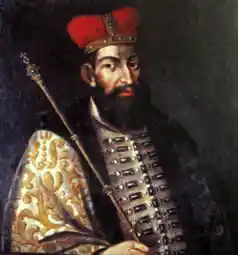
Narimantas – The Pagan Knight Turned Eastern Hero
>Son of Gediminas, baptized but never quite tamed. Fought for Lithuania, but was also given rule in Eastern lands like Pskov and later perished in battle defending the frontier. Known for his courage, shifting allegiances, and tragic, war-torn life. He’s like a wandering knight from a Russian bylina but rooted in Baltic blood.
№197851[Quote]
File: Vytenis.jfif 📥︎ (245.69 KB, 966x1200) b81c9876c6c74639b118a7f31f107cc7e0dc880366787a61239b9fc6ed0394fd0ImgOps
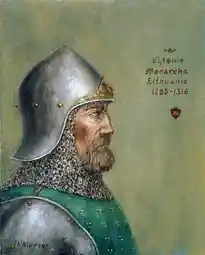
File: Butvydas.jfif 📥︎ (293.34 KB, 966x1200) b46d6cd2c52f9364308ccc9b5063b3cb6b3d44e62fa3d0248fc97a8f635c8ea10ImgOps

File: Gediminas.jfif 📥︎ (302.94 KB, 966x1200) 3ac9e4f53737624c8d995874cb9bb93322c3b59436699c866638c8933b5e95290ImgOps
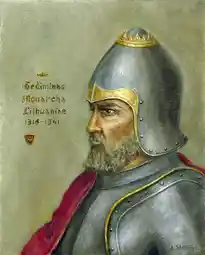
File: Narimantas.png 📥︎ (1.11 MB, 626x800) ec6dccd2759b5919136cec6485b236a5ecd8d8907b25ab46ae41c4dbd4947b210ImgOps
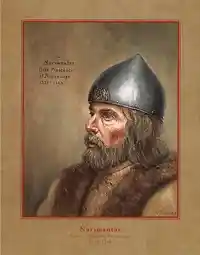
№197852[Quote]
File: Kęstutis.jfif 📥︎ (303 KB, 966x1200) 6339e1b119d801e396bc5f8ea15e5c1f3a7131638af7cd110b9de59ab40743740ImgOps
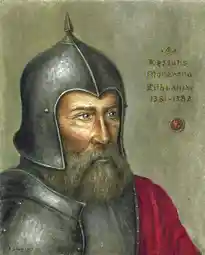
File: Algirdas.jfif 📥︎ (232.45 KB, 966x1200) ca8d6b52624da493c59498f3b4bd99ad5964eb73af6736544cc9909435d2ab280ImgOps
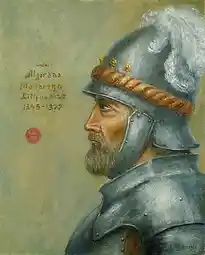
№197854[Quote]
File: Treniota.jfif 📥︎ (290.79 KB, 966x1200) 9f18d999f072c3666499030839823e4fe56cf89b3878c0f167db3e04dc8b8ded0ImgOps
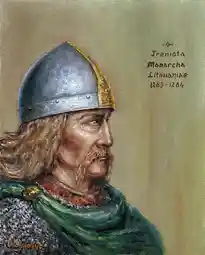
File: Traidenis.jfif 📥︎ (331.13 KB, 966x1200) ec39b65e5b3060ed77900071b58e4cc20c79572f6e70e01ff3f40f9e4889de540ImgOps
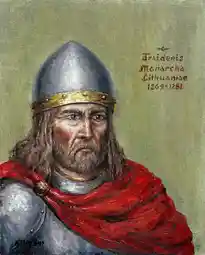
File: Jaunutis.jfif 📥︎ (301.08 KB, 966x1200) 6c3291ed7e1871e79ea2cf18e4ec9e83587fada139cd64dae744127a4a209d840ImgOps
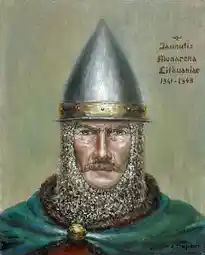
File: Skomantas.jfif 📥︎ (303.71 KB, 966x1200) d964078c76b6c8f34fdb393ba9e12705b47c9623ff05c06c5ec95897099e75000ImgOps
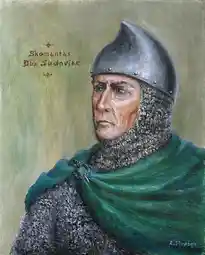
№197855[Quote]
File: Živinbutas.jpg 📥︎ (317.27 KB, 966x1200) 1641599c3d977e44e599c8ce8d664256476d1bb13b29ddb0efcb0086084b5fbd0ImgOps
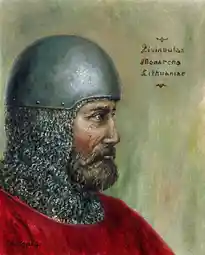
File: Morta.jfif 📥︎ (268.17 KB, 966x1200) 31e13ee686c171198cce3330191e8cc7733044fe13e33fb0face8d634cc6f90f0ImgOps
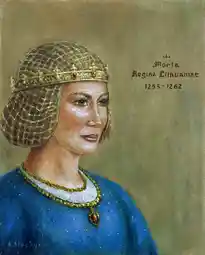
File: Mindaugas.jpg 📥︎ (303.54 KB, 966x1200) 2c138cebb5a8e25d9ffa3192eab58462792be3b41c3260ec0785dc6bc1c83e3d0ImgOps
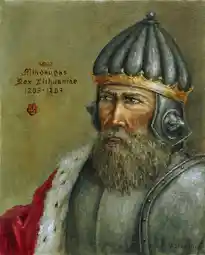
File: Nameisis.jfif 📥︎ (298.58 KB, 966x1200) 26d6c6ceca69b85b8d93e1e11d8c9134f3b7263a72642ecce1699e5288d47f880ImgOps
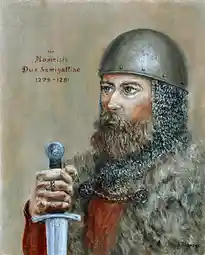
№197856[Quote]
File: Daumantas.jpg 📥︎ (144.13 KB, 573x714) cd781e81c8df79ea8c91c67e26e91c97386265a5e18e879a07151e7e1a6139a70ImgOps
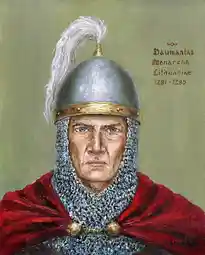
File: Alminas.jfif 📥︎ (340.26 KB, 966x1200) 82a3706363d44f2eccf80ff7fc9890f3f715027ace60406dbde8258557bcf2400ImgOps
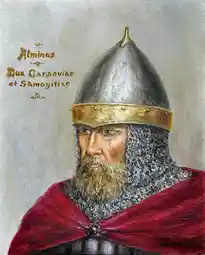
File: Vykintas.jfif 📥︎ (321.91 KB, 966x1200) 616c3926a76764ccdccb399cd9e3139a6b71836efc6ec4c5bc9810b073149b680ImgOps
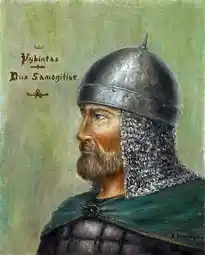
File: Tautvilas.jfif 📥︎ (231.88 KB, 966x1200) cd9ab5cd326469b69d4bb66985446cbe45929ab5c9a72a4cad68ab436c5e14b80ImgOps
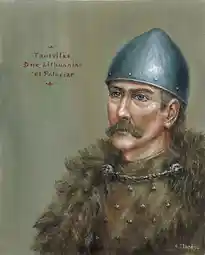
№197858[Quote]
hey hey hey hey I love and admire the oldschool Russian heroes, the bogatyrs. But if it were 700–800 years earlier, I’d ride straight into the kremlin, drag that faggot putler out by his bald little mongol head, and chop it clean off—no questions, no trial no nothing, right outside the Kremlin walls, by Saint Basil’s Cathedral. The last thing that 160cm manlet would hear would be: “Hey faggot, who’s the bogatyr now, faggot?” Just like that 22 y.o. Polish lad did yesterday outside Warsaw University in broad daylight—literally took someone’s head off with an axe, middle of the day. The Commonwealth spirit lives on.


№197874[Quote]
File: IMG_8997.jpg 📥︎ (321.62 KB, 719x1000) 483ee41397842fb8a25933335c91b2b19aca490fd0e3de4e2f2bc9638cf456db0ImgOps
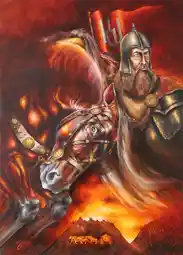
File: IMG_8463.jpeg 📥︎ (220.21 KB, 724x1024) 0c6c267675b1fc7e9296911b197ccf09a58730fced63eb610a174506658e5af10ImgOps
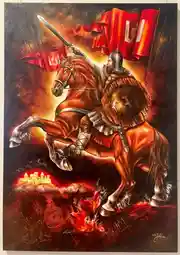
A Thousand (((1000))) Year State ;p Baltia my Beloved
№197875[Quote]
File: melyn.jpg 📥︎ (327 KB, 1600x940) d9ce68e69a1dc44436bb83ed35138c9c1940b49c8a7e69f693949f2149f598db0ImgOps
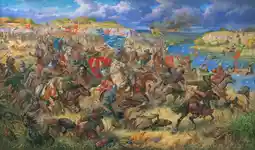
A 1000
(((Thousand))) Year State :b
Baltia my beloved

№197960[Quote]
File: Romuva_logo.png 📥︎ (150.25 KB, 482x517) 94bb8f1a6376513c37023af1664b1992e864e66d97c217a0ba1f395a19bbcce40ImgOps

File: Romuva_logo.png 📥︎ (150.25 KB, 482x517) 94bb8f1a6376513c37023af1664b1992e864e66d97c217a0ba1f395a19bbcce40ImgOps

Baltic VidilismBaltic Vidilism (often known today through the modern revival called
Romuva)

№197963[Quote]
File: Romuva_2.png 📥︎ (218.16 KB, 534x467) 59e6326d67188c32db6568e63d33b193b4e6134ec6926c796b1e91b9a5691e440ImgOps
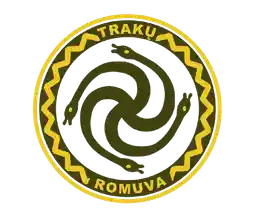
File: Romuva_2.png 📥︎ (218.16 KB, 534x467) 59e6326d67188c32db6568e63d33b193b4e6134ec6926c796b1e91b9a5691e440ImgOps
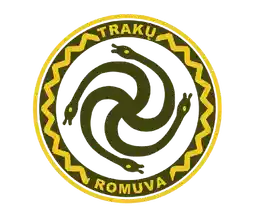
Baltic VidilismBaltic Vidilism (often known today through the modern revival called
Romuva)


№197972[Quote]
File: picture2.jpg 📥︎ (146.23 KB, 893x670) ba6970862640e1c5e538f896520748f9fd8beb39e30dd23936c1b0d4e21af7ec0ImgOps
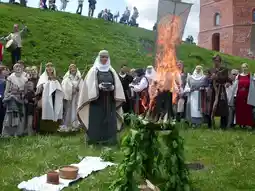
Baltic Vidilism
Core Characteristics of Baltic Vidilism
2. Sun and Seasonal Worship
The Sun is central, often viewed as a female divine force bringing life and order. Celebrations followed the solar calendar—major festivals like Rasa (Summer Solstice), Kūčios (Winter Solstice Eve), and Užgavenes (Carnival) reflect a deep connection to the cycle of seasons..
№197973[Quote]
File: romuva2.jpg 📥︎ (473.46 KB, 1338x892) 76589d3d2632418ce946b995e6660ca9cf99f72e254e856cbd2b7cad435026560ImgOps

File: 8807-976467.jpg 📥︎ (112.09 KB, 1254x836) bf5b490294c0126f4f89fe0990270fb0ec4f851e7d92ec5713f6c9343c2d4aeb0ImgOps

Baltic Vidilism
Core Characteristics of Baltic Vidilism
3. Fire as a Holy Element
Eternal sacred fires were maintained by priestesses (similar to Roman Vestals). Fire was seen as a messenger between humans and the gods, and letting it go out was considered a spiritual disaster
№197975[Quote]
Baltic VidilismCore Characteristics of Baltic Vidilism3.
Fire as a Holy Element pt. II

 Eternal Fire: Fire was central to the ancient Baltic religion. Destructive and Creative symbolism.
Eternal Fire: Fire was central to the ancient Baltic religion. Destructive and Creative symbolism. №197979[Quote]
File: c714d74.jpg 📥︎ (170.61 KB, 1200x800) d11ba7873f4a54f281cbd6a67f087e36792a107ad0e093896e978d43b344b95c0ImgOps

Baltic Vidilism
Core Characteristics of Baltic Vidilism
5. Harmony over Dualism
Unlike Norse or Christian mythologies, Baltic deities were not strongly divided into "good" and "evil." Gods and spirits were part of nature’s balance—thunderstorms, fertility, death, and healing all had their divine personifications.
№197992[Quote]
File: 428911.jpg 📥︎ (Spoiler Image, 90.83 KB, 735x924) c61f1ff871c39c5e1697f80e61e10f33e10507f0c613e3f1e1f1e08371f470170ImgOps

File: 428912.jpg 📥︎ (Spoiler Image, 82.07 KB, 534x664) 315633b9f36479295dd8b3955613005ac9746cab7a628d26a6d886da8fbd4e640ImgOps

Baltic Vidilism Unique Features (Idomybes)
## Living Language of Ritual
Sacred songs called dainos or sutartines were sung in ceremonies, often preserving ancient cosmology and philosophy. These chants were oral scriptures—poetic, symbolic, passed from generation to generation.
№198015[Quote]
File: unnamed.jpg 📥︎ (Spoiler Image, 94.73 KB, 342x512) 4b2df19b887688522e0eae1c0b971ff69c960f3524d4ba69e3cc736347960dc60ImgOps

File: unnamed (1).jpg 📥︎ (Spoiler Image, 87.18 KB, 342x512) 3fc75f1b5d35cd8a8f0b8e0189c961c7039c8778997039b267b218ab764dcb150ImgOps

File: unnamed (2).jpg 📥︎ (Spoiler Image, 84.46 KB, 342x512) 3326b258c9ad2cd89b67e43273ec699c66438c31c4da7b2d2b862666355b2bce0ImgOps

Baltic Vidilism Unique Features (Idomybes)
## Gender Balance in Spiritual Roles
Both men and women had ritual authority—priestesses (vaidilutes) and priests (vaidilos, krivis) led ceremonies. The Krivis (high priest) acted like a spiritual chief for the nation, especially in pre-Christian times (e.g., in Prussia or ancient Lithuania).
№198049[Quote]
File: f4e4f1ffb7c.jpg 📥︎ (24.7 KB, 276x414) 8cb8b4174b7e4c39fc7a85f1ba9912d68119ff7c842bd1a9c728410225f5a2fd0ImgOps
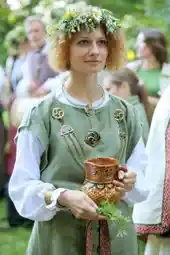
File: Balticknight.png 📥︎ (Spoiler Image, 293.14 KB, 1024x724) 59f051f0d24d8c6facf625e731969083cb1ce6b894db1a674b237328d7dc2cd00ImgOps

File: f4e4f1ffb2c.jpg 📥︎ (49.18 KB, 474x711) 0bf52bc1c71b197c32f2c3e287678f7d9cfe70de61c68c99360d530d0b3007e00ImgOps

Baltic Vidilism Unique Features (Idomybes)
## Resistance to Christianization
The Baltic peoples were the last pagans in Europe—Lithuania officially converted only in 1387. Many rural communities secretly preserved pagan rituals well into modern times, blending them with Christian customs.
№198050[Quote]
File: f4e4f1ffb9c.jpg 📥︎ (601.33 KB, 1500x2000) 2579d670a172542a857662ee6aae89deea7789159d89667b54eb9841ab611b230ImgOps

File: f4e4f1ffb6c.png 📥︎ (110.8 KB, 700x700) 664a35d864dd6c9b5d9c4d324d731ad15b31db3bce2b27288e4c8bc95b0c425e0ImgOps

File: f4e4f1ffb0c.png 📥︎ (1.24 MB, 2560x2560) c1611b0e66d6ecd12b129526dc4d42f13a96bd0ee56c4f855b99e06ead541fb10ImgOps

File: f4e4f1ffb8c.jpg 📥︎ (308.11 KB, 1500x2000) 3b0e0666c4b4a3e9fac95cbb7107a1de8eb2deae37682d13e99de18996e216000ImgOps

Baltic Vidilism Unique Features (Idomybes)
## Ethnic and Cultural Continuity
Baltic paganism is closely tied to ethnic identity and folk traditions—dances, clothing, crafts, and names often have spiritual meaning. Revival movements like Romuva stress a direct cultural lineage to pre-Christian ancestors.